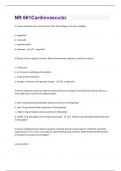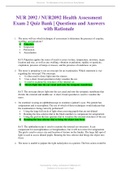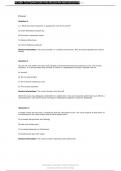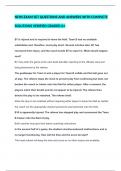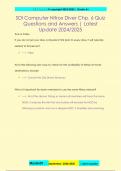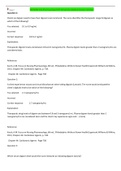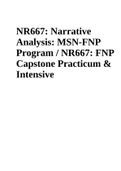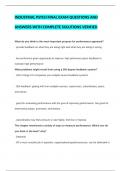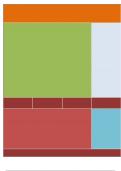Exam (elaborations)
NR 661Cardiovascular Questions And Answers Rated A+ New Update Assured Satisfaction
- Course
- Institution
A 25 year old patient has aortic stenosis (AS). The etiology of his AS is probably: a. congenital b. rheumatic c. acquired clacific d. unknown - a. congenital A 28 year old has a grade 3 murmur. Which characteristic indicates a need for a referral a. a fixed split b. an increase in splitting...
[Show more]
